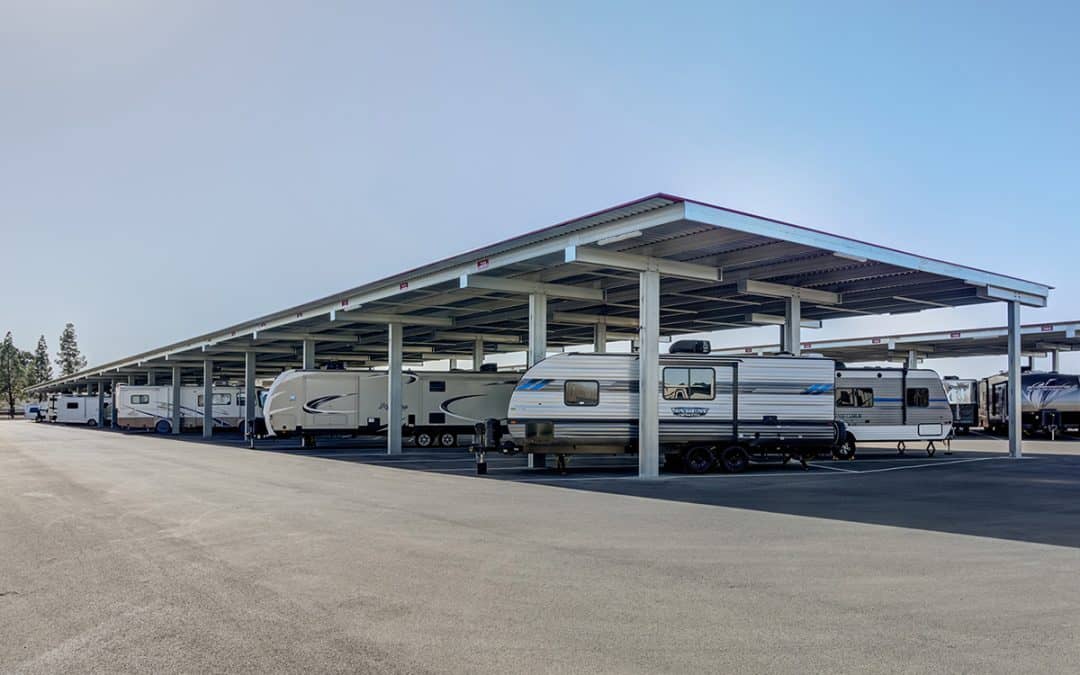As we inch closer to winter, our minds have turned towards how to winterize an RV for storage. Large recreational vehicles like campers, RVs, and motorhomes need to be protected during the off season from extreme weather conditions, especially in parts of the country prone to freezing temperatures. Before moving into RV storage at Security Public Storage, we compiled a list of tips to help you winterize your mobile home. Winterizing your RV before moving it into storage, even if you’re parking it at home, is essential to protecting your investment and the promise of more adventures to come.
RV Winterizing Tips for Seasonal Storage
- Drain the Water — Removing water from the plumbing system of your RV is one of the most critical steps in winterizing. Water remaining in the plumbing system of an RV can freeze and break fittings and lines when exposed to freezing temperatures. This damage often results in costly repairs. While this can be a do-it-yourself process, if you don’t feel qualified to drain both the fresh and waste water from your RV, you can always hire a professional.
- Add RV Antifreeze — After draining the water from your RV, it’s important to get non-toxic antifreeze (pink in color) into all of the water systems, except for the water heater. Draining and then bypassing the water heater helps you save several gallons of antifreeze.
- Inspect the Exterior and Reseal Cracks — Before moving your RV into winter storage, we recommend having a service center do an inspection of the access panels, doors, windows, seams, sidewalls, and the roof. Any holes or cracks should be resealed, or re-caulked, to prevent water from getting where it shouldn’t. Before resealing, check with your RV dealer to select the right sealant for your RV and climate.
- Winterize RV Batteries — Batteries drain quickly in freezing temperatures, which means that if a battery freezes over the winter, the lifespan decreases. Prevent freezing batteries by keeping your RV plugged in all winter or by removing the RV batteries and storing them in the house or a heated garage. Removing your RV batteries for storage is the safest option and what we recommend. Before moving RV batteries into storage, make sure they are fully charged and if they are low on water, fill them with distilled water.
- Add Fuel Stabilizer or Fuel Microbicide (Depending on Fuel Type) — Unleaded gas inside of your RV tanks can go bad over time, resulting in sticky resin deposits, caused by oxidation. Adding a fuel stabilizer to your full fuel tank helps prevent these deposits from forming. If your RV runs on diesel, you have to worry about bacteria and yeast producing a slimy film that can ruin your engine. Add a fuel microbicide to your diesel tank before winterizing, allowing it to idle for a few minutes to move through the lines.
- Cover RVs Stored Outside — If you will be storing your RV outside during the winter, be it on your property or in an outdoor RV parking space at SPS, we recommend protecting it with a cover designed specifically for RVs. RV covers protect your investment by blocking exposure to ultraviolet rays that can damage paint finish. Covers also help protect your RV from bird droppings, tree sap, and wind damage.
- Prevent Pests From Entering — Remove all food from your RV and clean the interior before moving into winter storage. Pay attention to areas where rodents and other pests may try to enter your vehicle – close cable hatches tight, put steel wool in your tailpipe, make sure all windows and doors are closed tight.
- Move RV Occasionally While in Storage — If possible, we suggest doing a quick inspection of your RV every couple months while in storage. Just like other motorized things that aren’t used in the winter (your lawn mower, for example), it’s smart to run your RV occasionally during the winter. Every six to eight weeks, remove the RV cover, turn on the engine and let it warm up to operating temperature. Move the RV a couple feet to prevent the tires from getting an uneven shape.
Winterize Your RV before Storage

